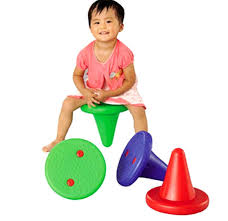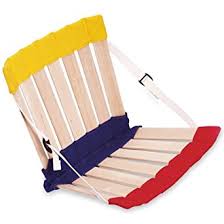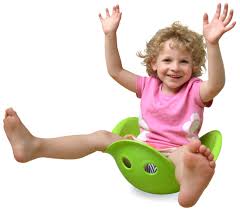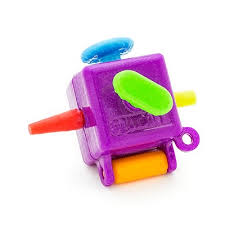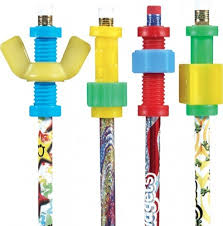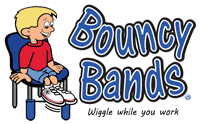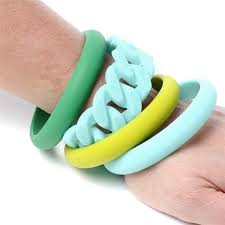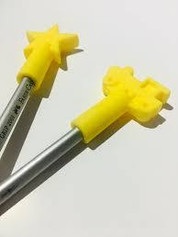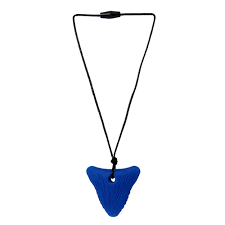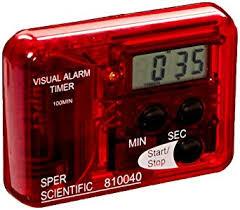10 Sensory Tools for a Sensory-Informed Classroom
- Alescia Ford-Lanza
- Jul 27, 2017
- 6 min read
Updated: Oct 19, 2018
originally published on Harkla
If you’ve got a sensory child who’s of school-age, it’s likely that he will need sensory supports when he restarts school in the fall. When talking to your teachers and administrators about the need for sensory tools in the classroom, it’s important to frame your discussion in terms of your child’s “readiness to learn.” Sensory tools are intended to promote regulation, improve focus, increase participation, and therefore enable your child to be available for learning!
The key to a sensory-informed classroom is that it supports the various sensory needs of the students in the classroom in a way that is as natural as possible! Not all students learn the same, nor do they have the same sensory needs. When you include sensory supports or tools in a classroom, they will be used differently by kids depending on what their bodies need, when they need input, and how they choose to use the tools!
No matter how they are used, sensory tools that are naturally embedded into the existing school day are more likely to be used by more than just your sensory child, therefore decreasing the social stigma of needing something “different.” By creating a sensory-informed classroom, teachers are setting the tone or culture of the classroom to be one of inclusion, acceptance, and differentiation, no matter what the students’ needs are!
The goal of sensory tools in school is to support participation, engagement, and interactions that promote skill development and learning. Whether your child is working to develop social skills with peers, behavioral and emotional regulation, improve attention/focus, develop organization skills, or manage classroom behaviors, sensory tools can regulate a child’s arousal level in order to get at these higher-level skills needed for classroom success!
Top 10 Considerations for a Sensory-Informed Classroom:
1. Flexible/Alternative Seating -
Did you know that school-aged children need 4-5 hours of movement per day to meet their developing central nervous system’s sensory needs? That’s a hard recommendation to follow when much of their waking day is spent in school! The easiest way to allow for movement in a classroom is to offer students active seating options. “Active seating” is seating that allows for wiggling, moving, and adjusting as an alternative to the typical classroom chair. There are a number of designs to consider:
Tabletop seating on T-Stools, ball chairs, or Move n’Sit cushions
Floor seating in a beanbag chair, backjack chair, or sensory floor cushion
Standing stations with standing desks or easels
For more active seating ideas check out Adapt & Learn’s Sensory Seating Pinterest page.
2. Heavy Work Activities -
Heavy work activities are designed to provide proprioceptive input that has a calming, organizing effect on students. When you put everyday classroom objects (books, lunch bags, recess equipment) into a laundry basket, students can carry/push/pull these heavy baskets for extra doses of proprioceptive input.
Better yet, assigning these heavy work tasks as daily classroom “jobs” will ensure these heavy work activities are embedded into natural classroom routines: chair stacker, library book returner, white-board eraser, recess equipment carrier, door holder!
Check out the American Occupational Therapy Association’s OT Connections Blog for some heavy work chores and activities that are appropriate for home and school.
3. Manipulatives -
Manipulatives are often used as a multi-sensory way to teach concepts in school. Whether reinforcing math concepts with popsicle sticks or segmenting and blending words with unifix cubes, manipulatives allow for a hands-on approach to new learning. For kinesthetic learners, or students who learn best when actively touching, moving, and manipulating materials, these manipulatives make learning happen.
If you’ve read our article on Fidget Toys for ADHD & Anxiety, you know how tactile tools are used as fidgets to help some kids to focus. Sensory-informed classrooms can incorporate tactile manipulatives and fidgets to support a multitude of students. Consider distraction-free fidgets like pencil top fidgets, bouncy bands on chairs and desks, and set expectations with a classroom poster of fidget rules!
4. Oral Input -
The easiest way to incorporate consistent oral motor sensory input into the school day is to look at what you’re sending your child for snacks and lunch. Just as you vary the nutritional contents of those foods you send, you should also be varying the textures, flavors, and consistencies. Chewy, crunchy foods will offer proprioceptive input to the mouth/jaw and offering liquids to suck through a thick straw (i.e. water bottle w thick straw like this) will also require the use of mouth muscles! For kids who need more oral input in school, alternative tools allow for sensory modifications in subtle ways.
Pencil toppers like this allow your child to safely chew on the end of his pencil
“Chewelry” (chewable jewelry) offers necklaces, dog tags, and bracelets that are fashionable and functional.
Some classrooms and schools allow gum or chewy candy to be proactively used to meet oral sensory needs. In these cases, “gum rules” are enacted to ensure appropriate use.
5. Movement -

When you get your child’s school schedule, take note of the movement opportunities in the form of gym class, specials, and recess. Are those times sufficient to help your child regulate and get a good dose of vestibular input? If not, you’ll need to look at additional movement opportunities in the form of whole class activities.
GoNoodle is a free favorite with teachers and students alike!
Student-specific movement activities on key rings, flashcards, or classroom posters can cue kids to take movement breaks to help regulate.
Movement-minded classroom jobs like mail carrier, materials manager/paper passer, or office runner allow for movement within natural routines
If you’re lucky enough to have a classroom therapy ball, there are a multitude of movement-based sensory breaks using the ball from bouncing to rolling and more!
6. Deep Pressure -
Weighted objects and weighted lap pads are a must-have in every classroom for seated tabletop tasks and carpet times! Weighted materials like Harkla’s weighted lap pad offer deep pressure input that has a calming and organizing effect. Read more on the effects on deep touch pressure here.
Some students prefer compression garments worn under regular clothing or compression vests worn on top of their clothing. These are student-specific considerations that are appropriate sensory tools for school depending on your preference and your child’s sensory needs.
7. Sensory Deprivation Area -
Because a classroom can be a noisy, visually overwhelming, overstimulating place for a sensory student, it’s important to have a designated “quiet corner” that could be as simple as the reading nook in the corner of the class or as complex as a teepee with a beanbag chair and headphones! Having an identified sensory deprivation area will allow your child to initiate taking a break when needed, proactively de-escalating when he feels overstimulated.
8. Visuals -
It’s important to look at visual supports for learning as well as for regulation assistance in a classroom. When visuals are effective, they reduce the amount of verbal direction, reminders, or prompting needed. For some sensory students, these strategies could make a huge difference in supporting positive classroom behaviors and self-regulation. Visual timers and visual calm-down bottles both offer non-verbal ways of prompting transitions and behavior supports.
For other students, reducing the amount of visual distraction is key to helping them maintain attention and complete classroom tasks. Desktop or tabletop partitions, privacy boards, or “offices” are sometimes all it takes to help a student to focus on his work!
9. Tactile Tools for Teaching -
Think back to preschool and kindergarten - so much new learning took place through tactile mediums! Fingerpaint tracing shapes, shaving cream letter writing, even playdoh letter rolling -- using the tactile (touch) sensory system helps some students learn new concepts!
For elementary-aged children, using tactile tools can support continued concept development, so bring out the sand tray, raised line paper, tactile bins, and sensory table. There’s a way to make most new concepts multisensory! Check out Pinterest for some great tactile tools for teaching.
10. Auditory -
We’ve talked about reducing sensory stimulation with a quiet corner in the classroom, but there are times when auditory information can help sensory students identify transitions and learn new information. Familiar songs, rhymes, and music can prompt students through the routine expectations of the classroom. We all remember Barney’s Clean Up song, right? Predictable musical prompts, whether they are a song or an instrument like a chime, can ease transitions from preferred to non-preferred activities.
For the reluctant reader, include audiobooks along with text to draw on auditory interests and strengths. Sometimes, listening to the rhythmic, calming voice of the narrator can help engage a reluctant reader and avoid some behaviors in the classroom.
No matter the type of classroom setting your child is in, or the type of learner he is, there are countless ways to modify the school environment with sensory-informed choices. For more information on sensory tools for school, check out Adapt & Learn’s Sensory-Informed Classroom Pinterest page. We at Harkla would love to hear from you about what your sensory-informed classroom is doing to keep all students engaged and learning!







